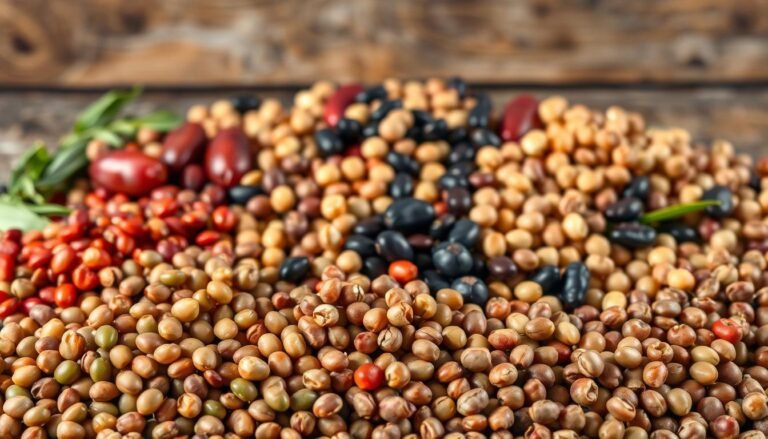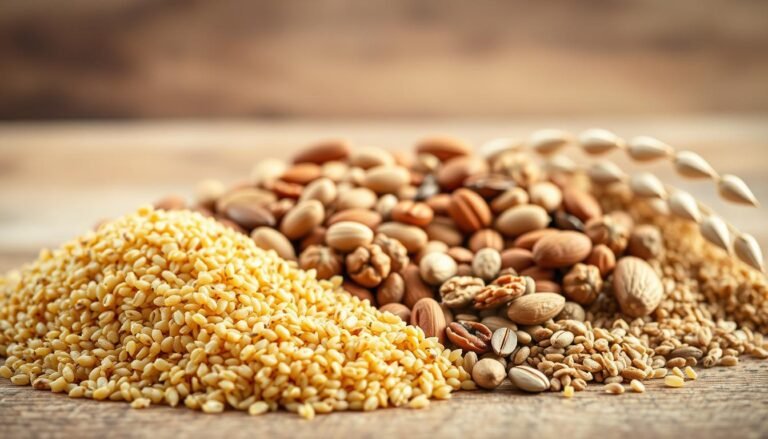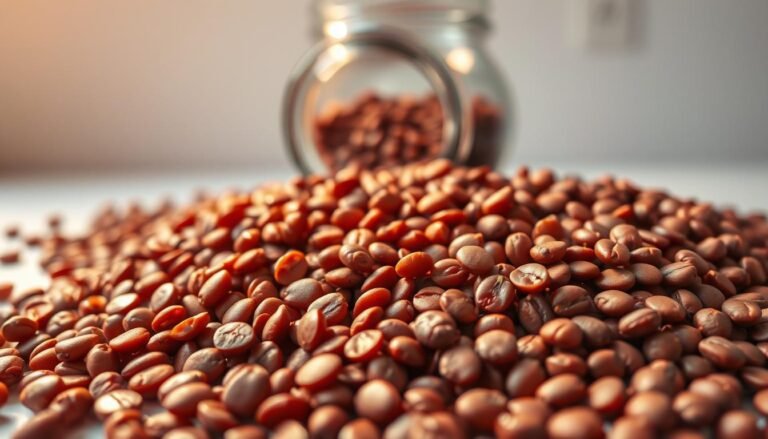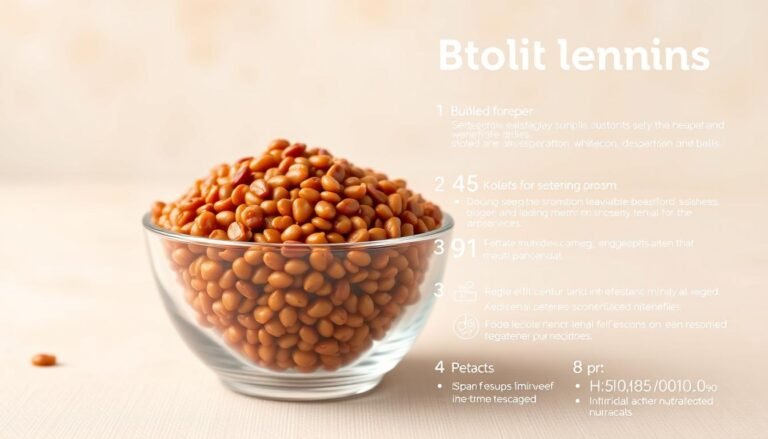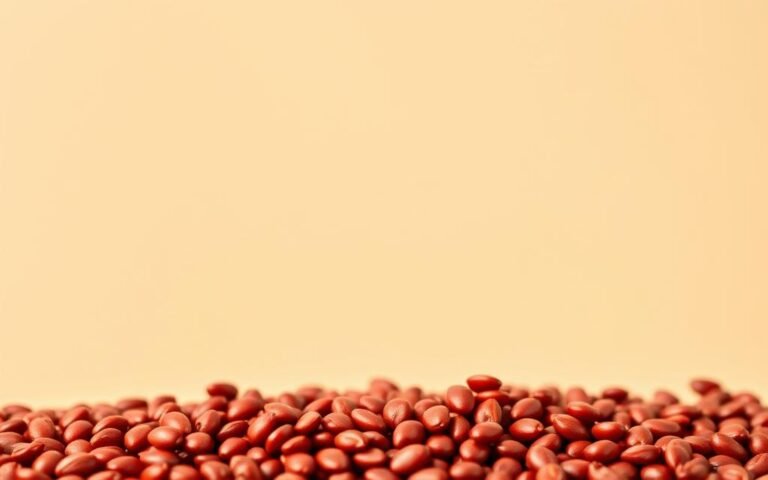When it comes to making informed dietary choices, understanding the nutritional benefits of different foods is crucial. Two foods that have gained significant attention for their health benefits are lentils and quinoa. Both are considered healthy grains, but they have different nutritional profiles.
Lentils are rich in protein and fiber, making them an excellent choice for those looking to improve their digestive health. On the other hand, quinoa is a complete protein and a good source of various minerals. Comparing the nutrition of lentils and quinoa can help you decide which one to include in your diet for maximum health benefits.
Key Takeaways
- Lentils are high in protein and fiber.
- Quinoa is a complete protein and rich in minerals.
- Both lentils and quinoa are considered healthy grains.
- Comparing their nutrition can help inform dietary choices.
- Including either or both can enhance overall health.
The Rising Popularity of Superfoods in Australia
Australians are increasingly embracing superfoods, with a particular focus on plant-based proteins like lentils and quinoa. This shift is driven by a growing awareness of the health benefits associated with these foods.
Why Australians Are Embracing Plant-Based Proteins
The trend towards plant-based proteins is largely due to their nutritional value and environmental benefits. Lentils and quinoa are rich in protein, fiber, and essential nutrients, making them ideal for health-conscious consumers. Moreover, they are versatile ingredients that can be incorporated into a variety of dishes, from salads to main courses.
Local Availability and Pricing in Australia
Lentils and quinoa are widely available in Australian supermarkets and health food stores. The pricing varies depending on the type, quality, and brand. Generally, lentils are more affordable than quinoa, but both are considered good value for money given their nutritional benefits.
When comparing lentils and quinoa, Australians have a choice between two nutrient-dense foods that can significantly enhance their diet. Understanding the local availability and pricing can help consumers make informed decisions about their dietary preferences.
What Are Lentils? A Nutritional Overview
As Australians continue to seek out nutritious and sustainable food options, lentils stand out as a nutritional powerhouse. Lentils are a type of legume that is rich in protein, fiber, and various essential minerals, making them an excellent addition to a healthy diet.
Lentils have been a staple in many cuisines around the world for centuries. They are known for their nutritional benefits, including being a good source of plant-based protein and having a low glycemic index. This makes them particularly beneficial for individuals looking to manage their blood sugar levels or those following a vegetarian or vegan diet.
Types of Lentils and Their Nutritional Differences
Lentils come in various colors and sizes, each with its own nutritional profile. The most common types are red, green, brown, and black lentils.
Red, Green, Brown, and Black Lentils Compared
Red lentils are known for their sweet flavor and soft texture, cooking quickly and losing their shape. Green lentils retain their shape after cooking and have a more robust flavor. Brown lentils are similar to green lentils but have a slightly earthier taste. Black lentils, also known as beluga lentils, are small and shiny, holding their shape well after cooking.
| Type of Lentil | Cooking Time | Nutritional Highlights |
|---|---|---|
| Red Lentils | 20-25 minutes | High in protein and fiber |
| Green Lentils | 30-40 minutes | Rich in iron and potassium |
| Brown Lentils | 30-40 minutes | Good source of folate and manganese |
| Black Lentils | 25-30 minutes | High in antioxidants and fiber |
Australian-Grown Lentil Varieties
Australia is a significant producer of lentils, with various regions cultivating different types. The country’s lentil crop includes a mix of red, green, and other varieties, catering to both domestic consumption and international markets. Australian-grown lentils are known for their quality and nutritional value.
What Is Quinoa? A Nutritional Overview
As a complete protein and a rich source of essential nutrients, quinoa stands out in the world of healthy grains. Quinoa is not just a food item; it’s a nutritional powerhouse that has been a staple in many cultures for centuries. It is particularly valued for its high protein content, making it an excellent option for vegetarians and vegans.
Quinoa is also rich in fiber, magnesium, iron, and other vital nutrients. Its nutritional profile is complemented by its versatility in cooking, making it a popular choice in various cuisines around the world. The fiber in quinoa contributes to digestive health, while its magnesium content is crucial for muscle and nerve function.

Types of Quinoa and Their Nutritional Differences
The nutritional benefits of quinoa can vary slightly depending on its type. Understanding these differences can help in making informed choices about incorporating quinoa into one’s diet.
White, Red, and Black Quinoa Varieties
Quinoa comes in various colors, including white, red, and black. While all types are nutritionally beneficial, there are slight variations. White quinoa is the most commonly consumed and has a milder flavor. Red quinoa has a slightly crunchier texture and a nuttier flavor, while black quinoa is known for its earthy flavor and firmer texture. Nutritionally, they are quite similar, with variations mainly in fiber content and antioxidant levels.
Australian-Grown Quinoa Initiatives
Australia has seen a rise in quinoa cultivation, driven by consumer demand for healthier food options. Australian-grown quinoa is known for its high quality and nutritional value. Initiatives to grow quinoa in regions like Western Australia have not only boosted local agriculture but also provided consumers with fresh, locally sourced produce. This trend supports sustainable farming practices and reduces the carbon footprint associated with importing quinoa.
Lentils vs Quinoa Nutrition: A Comprehensive Comparison
Lentils and quinoa are both nutritional powerhouses, but a closer look reveals distinct differences in their nutritional profiles. Understanding these differences is crucial for making informed dietary choices, especially for those looking to incorporate more plant-based proteins into their diets.
Macronutrient Comparison
When comparing the macronutrient profiles of lentils and quinoa, several key differences emerge. Both are excellent sources of protein and fiber, but their carbohydrate and fat content vary.
Protein, Carbs, and Fat Content
Lentils are high in protein and fiber, with a cup of cooked lentils providing about 18 grams of protein and 16 grams of fiber. Quinoa, on the other hand, is a complete protein, offering all nine essential amino acids, with a cup of cooked quinoa providing about 8 grams of protein. Lentils have fewer carbohydrates compared to quinoa, but quinoa has a slightly higher fat content, though mostly healthy fats.
Calorie Comparison Per Serving
A cup of cooked lentils contains approximately 230 calories, while a cup of cooked quinoa contains about 220 calories. The calorie difference is relatively minor, making both suitable for calorie-conscious diets.
Micronutrient Comparison
Beyond macronutrients, lentils and quinoa offer a wealth of micronutrients, including essential vitamins and minerals.
Essential Vitamins Breakdown
Lentils are rich in folate, iron, and B vitamins, particularly thiamin and pantothenic acid. Quinoa is an excellent source of vitamin E, magnesium, and B vitamins, including riboflavin and vitamin B6. Both foods provide a range of vitamins, but their profiles differ, with lentils exceling in folate and quinoa in vitamin E.
Mineral Content Analysis
Lentils are high in minerals like iron, potassium, and zinc. Quinoa is also rich in minerals, including magnesium, manganese, and phosphorus. The mineral content in both foods supports various bodily functions, from oxygen transport to bone health.
Protein Content: Lentils vs Quinoa
Protein is a crucial macronutrient, and both lentils and quinoa offer impressive amounts, but how do they compare? When evaluating lentils vs quinoa for protein content, it’s essential to consider not just the quantity but also the quality of the protein.
Lentils are known for their high protein content, with approximately 18 grams of protein per 1 cup cooked. Quinoa, on the other hand, provides about 8 grams of protein per 1 cup cooked. However, the protein quality differs significantly between the two.
Protein Quality and Amino Acid Profiles
The quality of protein is determined by its amino acid profile. Proteins are made up of amino acids, some of which are considered essential because the human body cannot produce them.
Complete vs. Incomplete Proteins
Lentils are considered an incomplete protein source because they lack sufficient amounts of the essential amino acid methionine. Quinoa, however, is a complete protein as it contains all nine essential amino acids in adequate proportions. This makes quinoa an excellent option for those relying heavily on plant-based proteins.
Essential Amino Acids Comparison
While lentils may not be a complete protein, they are still rich in several essential amino acids like lysine and leucine. Quinoa’s complete amino acid profile includes these as well, making it a more versatile protein source.
To better understand the protein content and amino acid profiles of lentils and quinoa, let’s examine the following comparative table:
| Amino Acid | Lentils (1 cup cooked) | Quinoa (1 cup cooked) |
|---|---|---|
| Lysine | 7.3 grams | 0.4 grams |
| Leucine | 6.5 grams | 0.8 grams |
| Methionine | 0.2 grams | 0.3 grams |
In conclusion, while lentils provide more protein by quantity, quinoa’s complete amino acid profile gives it an edge in terms of protein quality. This distinction is crucial for individuals with different dietary needs and preferences.
Carbohydrates and Fiber: How They Stack Up
Both lentils and quinoa are rich in carbohydrates and fiber, but a closer look reveals some key differences between them. Understanding these differences is crucial for individuals looking to make informed decisions about their diet, particularly for those managing conditions like diabetes or focusing on gut health.
Glycemic Index Comparison
The glycemic index (GI) is a measure of how quickly foods raise blood sugar levels. Lentils have a low GI, typically ranging from 20 to 30, due to their high fiber and protein content, which slows down the digestion and absorption of carbohydrates. Quinoa, on the other hand, has a moderate GI, usually around 53, because it’s primarily composed of complex carbohydrates but has less fiber compared to lentils.

The lower GI of lentils means they have a more gradual impact on blood sugar levels, making them an excellent choice for individuals with diabetes or those trying to manage their blood sugar.
Benefits for Diabetics and Pre-diabetics
For diabetics and pre-diabetics, lentils can be particularly beneficial due to their ability to help regulate blood sugar levels. The fiber in lentils also contributes to improved insulin sensitivity.
Fiber Types and Digestive Benefits
Fiber is a critical component of both lentils and quinoa, contributing to their digestive benefits. Lentils are particularly high in fiber, with a single cup of cooked lentils providing about 15.6 grams of fiber.
Soluble vs. Insoluble Fiber Content
Lentils contain both soluble and insoluble fiber, with soluble fiber helping to lower cholesterol levels and improve glucose metabolism. Quinoa also contains both types, but in different proportions.
Gut Health Implications
The fiber in both lentils and quinoa acts as a prebiotic, feeding the good bacteria in the gut, thereby supporting a healthy gut microbiome. This can lead to various health benefits, including improved digestion and enhanced immune function.
Vitamins and Minerals: Nutritional Powerhouses Compared
When it comes to nutritional value, both lentils and quinoa are considered superfoods, but how do they stack up against each other in terms of vitamins and minerals? Both foods are rich in various vitamins and minerals, but their bioavailability and daily requirements met differ.
Iron, Zinc, and Other Minerals
Lentils and quinoa are both excellent sources of essential minerals. Lentils are particularly high in iron, zinc, and potassium. Quinoa, on the other hand, is a complete protein and a good source of minerals like magnesium, manganese, and phosphorus.
Bioavailability Factors
The bioavailability of minerals in lentils and quinoa can be affected by various factors, including the presence of anti-nutrients like phytates. Cooking and preparation methods can enhance mineral bioavailability.
Meeting Daily Requirements
A serving of lentils can provide a significant portion of the daily recommended intake of iron and zinc. Quinoa also contributes to daily mineral needs, especially magnesium and manganese.
B Vitamins and Other Essential Vitamins
Both lentils and quinoa are good sources of B vitamins, although their profiles differ. Lentils are rich in folate, while quinoa contains a range of B vitamins including folate, B2 (riboflavin), and B6.
Folate and B12 Considerations
Lentils are an excellent source of folate, crucial for cell division and growth. Quinoa, while not as high in folate, provides other B vitamins. It’s worth noting that neither lentils nor quinoa is a natural source of vitamin B12, an important consideration for vegetarians and vegans.
Antioxidant Vitamin Content
Quinoa contains more antioxidant vitamins like vitamin E compared to lentils. Both foods, however, contribute to the overall antioxidant intake when consumed as part of a balanced diet.
“Incorporating both lentils and quinoa into your diet can provide a comprehensive range of vitamins and minerals, supporting overall health and well-being,” says a renowned nutrition expert.
Caloric Density and Weight Management
Understanding the caloric density and satiety factors of lentils and quinoa is essential for effective weight management.
Both lentils and quinoa are nutrient-dense foods that can play a significant role in a weight management diet. Their caloric density, or the number of calories per unit of weight, is relatively low, making them ideal for those looking to manage or lose weight.
Satiety Factors and Portion Control
Lentils and quinoa have different satiety factors that influence portion control. Lentils are high in fiber and protein, making them very filling. Quinoa, while also a good source of protein and fiber, has a slightly different nutritional profile that affects satiety.
Hunger Regulation Properties
Lentils have a high satiety index due to their fiber and protein content, helping regulate hunger. The fiber in lentils slows down digestion, keeping you fuller for longer.
Recommended Serving Sizes
A serving size of lentils is about 1/2 cup cooked, while for quinoa, it’s about 1 cup cooked. Understanding these serving sizes is crucial for effective portion control.
Which Is Better for Weight Loss?
Both lentils and quinoa can be beneficial for weight loss, but their calorie-to-nutrient ratio and role in Australian weight loss diets differ.
Calorie-to-Nutrient Ratio
Lentils have a lower calorie-to-nutrient ratio compared to quinoa, making them a nutrient-dense choice. They provide a high amount of nutrients while being relatively low in calories.
Role in Australian Weight Loss Diets
In Australian diets, lentils are often preferred for weight loss due to their high fiber and protein content. However, quinoa’s complete protein profile makes it a valuable addition to a weight loss diet as well.
| Nutritional Aspect | Lentils | Quinoa |
|---|---|---|
| Caloric Density (kcal/100g) | 116 | 120 |
| Protein Content (g/100g) | 9 | 4 |
| Fiber Content (g/100g) | 7.9 | 2.5 |
Digestibility and Potential Digestive Issues
Understanding the digestibility of lentils and quinoa is crucial for maximizing their nutritional benefits. Both lentils and quinoa are nutritious foods, rich in proteins, fibers, and various micronutrients, but they also contain compounds that can affect their digestibility.
Anti-nutrients in Lentils and Quinoa
Lentils and quinoa, like many other legumes and grains, contain anti-nutrients such as lectins, phytates, and saponins. These compounds can interfere with the absorption of nutrients.
Lectins, Phytates, and Saponins
Lectins can cause gastrointestinal distress in some individuals. Phytates can bind to minerals, reducing their absorption. Saponins can give quinoa a bitter taste and may cause digestive issues in sensitive individuals.
Who Should Be Cautious?
Individuals with compromised digestive systems or those suffering from conditions like irritable bowel syndrome (IBS) should be cautious. Soaking, sprouting, and proper cooking can help reduce the levels of anti-nutrients.
Preparation Methods to Improve Digestibility
Proper preparation can significantly improve the digestibility of lentils and quinoa.
Soaking and Sprouting Techniques
Soaking lentils and quinoa can help reduce phytate levels. Sprouting can activate enzymes that break down some anti-nutrients, making the nutrients more bioavailable.
Cooking Methods That Reduce Anti-nutrients
Cooking is an effective way to reduce lectins and other anti-nutrients. Pressure cooking, in particular, can be very effective.
| Preparation Method | Effect on Anti-nutrients |
|---|---|
| Soaking | Reduces phytates |
| Sprouting | Activates enzymes, breaks down anti-nutrients |
| Cooking | Reduces lectins and other anti-nutrients |
Health Benefits of Lentils
The health benefits of lentils are multifaceted, ranging from heart health to blood sugar regulation. Lentils are a nutrient-rich food that has been consumed for centuries, providing a range of essential vitamins, minerals, and macronutrients.
Heart Health and Cholesterol Management
Lentils are known to support heart health due to their high content of fiber, potassium, and antioxidants. These nutrients help in managing cholesterol levels and reducing the risk of cardiovascular diseases.
Research on Cardiovascular Benefits
Studies have shown that consuming lentils regularly can lower the risk of heart disease. A study published in the Journal of Nutrition found that a diet rich in lentils can help reduce blood pressure and cholesterol levels.
Recommended Intake for Heart Health
To reap the cardiovascular benefits of lentils, it is recommended to consume at least half a cup of cooked lentils per day. This can be incorporated into meals in various forms, such as soups, stews, or salads.
Blood Sugar Regulation and Diabetes Prevention
Lentils have a low glycemic index (GI), which means they are digested slowly, causing a gradual increase in blood sugar levels. This property makes lentils an excellent food choice for individuals with diabetes or those at risk of developing diabetes.
Low GI Properties and Insulin Response
The low GI of lentils helps in managing insulin response, thereby aiding in blood sugar regulation. This is particularly beneficial for individuals with type 2 diabetes.
Australian Diabetes Association Recommendations
The Australian Diabetes Association recommends including low GI foods like lentils in the diet to help manage blood sugar levels. They suggest that lentils can be a valuable part of a meal plan for people with diabetes.
In conclusion, lentils offer numerous health benefits, particularly in the areas of heart health and blood sugar regulation. Incorporating lentils into your diet can be a simple yet effective way to improve overall health.
Health Benefits of Quinoa
Quinoa is considered a powerhouse of nutrition, offering several health benefits. It is rich in essential nutrients, making it a great addition to a healthy diet. Quinoa’s nutritional profile includes high levels of protein, fiber, and various vitamins and minerals.
Gluten-Free Properties and Celiac Disease
One of the significant advantages of quinoa is its gluten-free property, making it an excellent option for individuals with celiac disease or those who are gluten intolerant. Quinoa provides a nutritious alternative to gluten-containing grains, allowing those with dietary restrictions to maintain a balanced diet.
Safety for Various Food Sensitivities
Quinoa is not only gluten-free but also hypoallergenic, making it safe for individuals with various food sensitivities. It is easy to digest and can be incorporated into diets for people with sensitive stomachs or specific dietary needs.
Nutritional Advantages Over Other Gluten-Free Grains
Compared to other gluten-free grains, quinoa stands out due to its high protein content and rich mineral profile. It contains all nine essential amino acids, making it a complete protein source, which is rare among grains.
Antioxidant Content and Anti-inflammatory Effects
Quinoa is rich in antioxidants, which play a crucial role in protecting the body against free radicals and oxidative stress. The antioxidant properties of quinoa contribute to its potential anti-inflammatory effects, which can help in reducing the risk of chronic diseases.
Flavonoids and Other Beneficial Compounds
Quinoa contains various beneficial compounds, including flavonoids, which have been shown to have anti-inflammatory properties. These compounds can help in protecting against cell damage and promoting overall health.
Potential Role in Chronic Disease Prevention
The antioxidants and other beneficial compounds in quinoa may play a role in preventing chronic diseases such as heart disease, diabetes, and certain cancers. Incorporating quinoa into one’s diet can be a step towards reducing the risk of these conditions.
Best Choices for Specific Health Goals
When it comes to choosing between lentils and quinoa, the decision often hinges on specific health goals and dietary needs. Both are nutrient-rich foods that offer unique benefits.
Optimal Choice for Athletes and Fitness Enthusiasts
Athletes and fitness enthusiasts require a diet rich in protein and complex carbohydrates to support muscle recovery and energy production. Both lentils and quinoa can fulfill these needs.
Pre and Post-Workout Nutrition
Lentils are high in complex carbohydrates and fiber, making them an excellent choice for pre-workout meals. Quinoa, with its complete protein profile, is beneficial post-workout for muscle recovery.
Muscle Recovery and Building
Quinoa’s protein content includes all nine essential amino acids, making it a superior choice for muscle building and repair. Lentils, while high in protein, may require complementary protein sources.
Best Options for Various Dietary Restrictions
Different diets have different requirements, and both lentils and quinoa can be adapted to various dietary needs.
For Keto, Paleo, and Low-Carb Diets
Quinoa is lower in carbohydrates compared to many grains, making it a better option for low-carb diets. However, lentils can be consumed in moderation.
For Plant-Based and Vegetarian Diets
Both lentils and quinoa are excellent sources of plant-based protein. Lentils are particularly high in fiber, while quinoa offers a complete protein profile.
| Dietary Need | Lentils | Quinoa |
|---|---|---|
| High Protein | Yes | Yes |
| Low Carb | No | Yes |
| Complete Protein | No | Yes |
Cooking Methods and Culinary Versatility
Both lentils and quinoa are versatile ingredients that can be prepared in numerous ways to enhance their flavor and nutritional value. Mastering various cooking techniques can help you incorporate these foods into your diet more effectively.
Cooking Lentils: Tips and Techniques
Lentils are relatively easy to cook and can be prepared using several methods. The key is to understand the basic cooking times and techniques to achieve the perfect texture.
Basic Cooking Methods and Times
Lentils can be cooked on the stovetop, in a pressure cooker, or using a slow cooker. Generally, green and brown lentils take about 20-30 minutes to cook, while red and yellow lentils cook faster, typically within 15-20 minutes. For more detailed cooking instructions, you can visit Harvard’s Nutrition Source, which provides comprehensive guidance on cooking lentils.
Flavor Pairings and Seasoning Tips
Lentils are highly receptive to flavors and can be seasoned with a variety of spices and herbs. Common pairings include garlic, onion, cumin, and bay leaves. Experimenting with different seasoning combinations can enhance the culinary experience.
Cooking Quinoa: Tips and Techniques
Quinoa is a bit more delicate than lentils and requires proper rinsing and preparation to remove its natural saponins, which can give it a bitter taste.
Proper Rinsing and Preparation
Rinsing quinoa under cold water before cooking can significantly improve its taste. It’s also essential to use the right water ratio, typically 2 cups of water for every 1 cup of quinoa.
Achieving Perfect Texture
Cooking quinoa until it’s tender and fluffy is crucial. It usually takes about 15-20 minutes on the stovetop. Using a fine mesh strainer after cooking can help remove excess moisture and achieve the desired texture.
By following these cooking tips and techniques, you can enjoy both lentils and quinoa in a variety of dishes, from hearty stews and salads to innovative vegetarian and vegan recipes.
Sustainability and Environmental Impact
With the growing demand for plant-based proteins, assessing the sustainability of lentils and quinoa is timely. As Australians increasingly adopt healthier and more environmentally conscious eating habits, understanding the ecological footprint of these foods becomes essential.
Water Usage and Carbon Footprint
Lentils and quinoa have different water usage and carbon footprint profiles. Lentils generally require less water and have a lower carbon footprint compared to quinoa. This difference is crucial for consumers making environmentally informed choices.
Environmental Comparison
A comparative analysis reveals that lentils are more water-efficient, requiring approximately 1,250 liters of water per kilogram, whereas quinoa requires about 2,000 liters per kilogram. This significant difference can influence the overall sustainability of these grains.
Sustainable Farming Practices
Adopting sustainable farming practices can significantly reduce the environmental impact of both lentils and quinoa. Techniques such as crop rotation and organic farming enhance soil health and reduce the need for chemical inputs.
Australian Production and Food Miles
The environmental impact is also influenced by whether these grains are sourced locally or imported. Locally sourced options reduce carbon footprint due to lower transportation costs.
Local vs. Imported Sources
Australia produces a significant amount of lentils, making them a more sustainable choice. Quinoa, while often imported, can also be sourced from local farmers who are increasingly adopting quinoa into their crop rotations.
Supporting Australian Farmers
By choosing Australian-grown lentils and quinoa, consumers support local farmers and contribute to the local economy. This choice not only enhances sustainability but also promotes agricultural diversity.
Conclusion: Which One Should You Choose?
After comparing the nutritional benefits of lentils and quinoa, it’s clear that both are valuable additions to a healthy diet. Lentils offer high protein and fiber content, making them ideal for heart health and digestive benefits. Quinoa, on the other hand, provides a complete protein and is rich in minerals like iron and magnesium, making it a great option for those seeking a gluten-free, nutrient-dense food.
When deciding between lentils vs quinoa nutrition, consider your individual health goals. For athletes or those requiring high protein intake, quinoa’s complete amino acid profile may be beneficial. For those focusing on heart health or managing blood sugar levels, lentils’ high fiber content is advantageous. Ultimately, incorporating both lentils and quinoa into your diet can provide a balanced mix of nutrients and health benefits.
In the context of Australian dietary preferences, where plant-based eating is on the rise, both lentils and quinoa are excellent choices. Their availability and affordability make them accessible for most consumers. By understanding the quinoa comparison and nutritional profiles, you can make informed decisions about your diet and enjoy the benefits of these superfoods.
